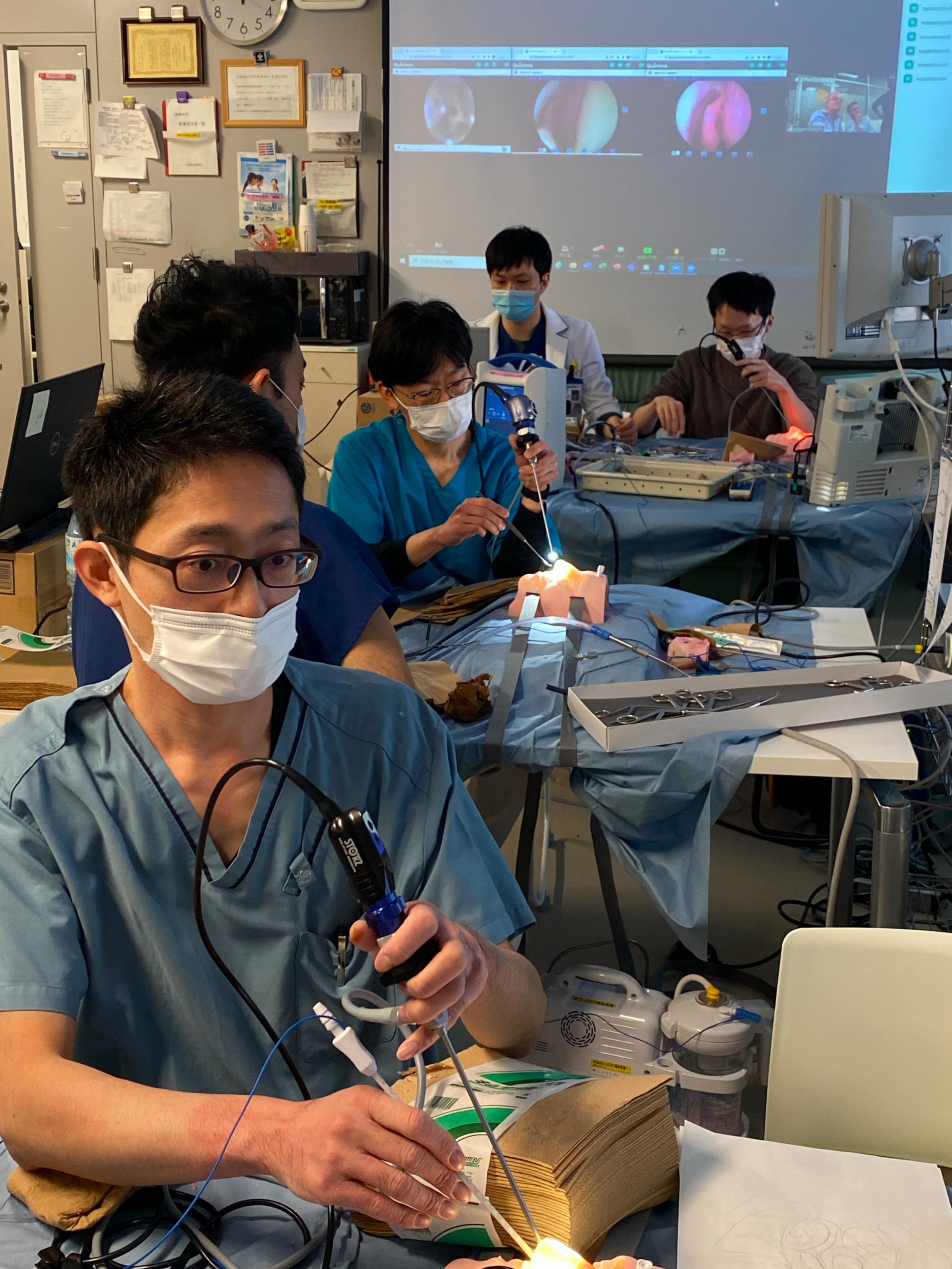
Surgeons undertaking training at Hokkaido University. Image: Dr Masanobu Suzuki
University of Adelaide experts have delivered the world's first remote sinus surgical training to surgeons in Japan.
Professor Alkis Psaltis and Professor Wormald from Adelaide Medical School along with their Japanese surgical colleague Dr Masanobu Suzuki trained more than 200 surgeons: three performed simulated procedures at Hokkaido University in Japan while others, located throughout Asia, watched the course online.
They conducted the course remotely using Quintree technology that allowed Professors Psaltis and Wormald to directly supervise the Japanese surgeons from their lab at the Adelaide Medical School and give them real-time feedback and instruction as they performed surgical procedures on 3D models in Japan.
"Using a secure video link we were able to simultaneously observe in real time each individual Japanese surgeon as they performed endoscopic sinus surgery on the 3D models," Professor Psaltis said.
In 2020 with COVID-19 and a ban on international travel, Dr Suzuki, a prominent Japanese sinus surgeon from Hokkaido University in Sapporo, suggested the world's first remote course. Dr Suzuki had previously spent a year of surgical observation and research at Adelaide Medical School under Professors Psaltis and Wormald.
"Since the course was run we have had requests from the USA, Germany, Russia and South America to run similar remote courses."Professor Alkis Psaltis
"Our surgeons received real-time feedback and instruction on their technique from Professor Wormald and Professor Psaltis. They, in turn, watched the surgeons performing procedures," said Dr Suzuki.
"Even though the training was delivered remotely a high degree of satisfaction was reported by the participants."
Normally such training is performed in-person and typically on cadaveric specimens as is done by Professor Wormald and Professor Psaltis who convene an advanced sinus surgical workshop at the Adelaide Medical School's Ray Last Anatomical Department each year.
Sinus surgery is a procedure that aims to open the pathways of people's sinuses and clear blockages. This is an option for people with ongoing and recurrent sinus infections, abnormal sinus structure, or abnormal growths in their sinuses.
"To carry out the training we used entirely 3D printed models that were developed and created by the Adelaide based company Fusetech. This replaced the need for traditional cadaveric material which is becoming increasingly difficult to source and has the potential risk of infectivity," said Professor Psaltis.
"The anatomy of the models is identical to that of humans as they are printed using the digital images of patients' CT sinus scans.
"The high-class materials used in their production result in an almost human tissue feel. With the constant evolution of the materials and technologies the look and feel of the tissues continues to improve exponentially.
"Sinus tumour and bleeding models are currently being produced and could revolutionise a surgeon's preparation for surgery."
The team delivered the world's first in-person course using the 3D models in Adelaide in November 2019. Quintree technology connects health care providers with ear, nose and throat (ENT) experts over secure video. It began as an idea for sharing clinical expertise based on first hand demand for knowledge of practising surgeons and medical school professors specialising in otolaryngology, the study of diseases of the ear and throat.
"During the training we demonstrated septoplasty, endoscopic sinus surgery, and management of carotid artery injuries," said Professor Psaltis.
"Since the course was run we have had requests from the USA, Germany, Russia and South America to run similar remote courses."






